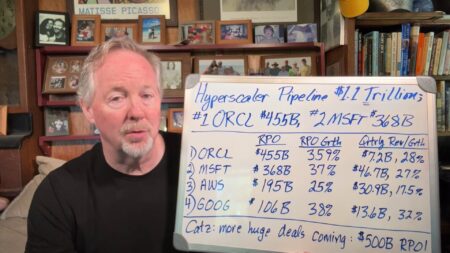The COVID-19 pandemic continues to significantly impact numerous industries, especially for people working in food preparation, packaging, and service. Social distancing and other safety measures have forced many restaurants to operate well below normal capacity. Other restaurants have suspended operations, as some experts believe that six in ten restaurants will never reopen.
However, it isn’t only bars and restaurants impacted by COVID-19, as the meat-packing industry experienced a significant number of infections throughout this pandemic. These outbreaks have resulted in numerous shutdowns that disrupted the supply chain, which inevitably leads to food shortages and an increase in prices.
Dealing with various concerns related to the pandemic and the importance of maintaining food supply chains has caused many companies in these industries to focus on investing in automation technology and artificial intelligence. Many of these businesses were already investing in this technology, but COVID-19 has accelerated the process. For example, Tyson Foods produces around 20% of beef, chicken, and pork in the United States. They have invested over $500 million in automation and other similar technologies in the past three years.
One of the drawbacks of investing in automation technology is the potential loss of jobs for workers in the agriculture and food industries. New technology may cause significant labor displacement in various areas in the food industry. Looking at how automation technology is adopted in different food supply chain areas is important in understanding how it impacts each sector.
Automaton in Food Production and Distribution
The agriculture and food industry plays a crucial role in feeding the United States and many other countries worldwide. Industry leaders have invested a significant amount of money in robotics and automated technology to improve efficiency and better meet future demands. A few critical areas of development include breeding systems, harvesting, fertilizing, and automated irrigation. These improvements are focused on minimizing production costs while also conserving fuel, water, and fertilizer.
Many of these technology advancements are not only more efficient but are also labor replacing. Some large commercial firms have decided to use harvesting robots due to the shortage of workers in the field. These robots can easily cover many acres that would typically take multiple workers to perform this task. Many firms in the United States have a strong incentive to continue to invest in this technology, as COVID-19 continues to limit the number of foreign workers coming into the country. The increasing number of driverless tractors and sprayers will even further reduce the need for workers in the not so distant future.
An acceleration of automation technology is even more prevalent further up the supply chain. Many distribution warehouses are using automated guided vehicles (AGVS) instead of traditional forklifts. These state of the art vehicles can easily perform a wide range of tasks, such as loading and unloading trucks, transporting large items across the warehouse, and other duties that used to require multiple employees. AGVS can also perform these operations in cold storage environments and other harsh conditions for long periods.
The pandemic has also expedited the use of technology in grocery stores across the country. Many stores are relying more on self-checkout cashiers and other forms of kiosks to maintain social distancing. Automation in the grocery industry allows employees to focus on other tasks in keeping up with the ever-increasing number of demands in the pandemic. For example, the use of autonomous floor care robots has significantly increased in recent months, allowing grocery store workers to engage in more productive activities.
How Robots Impact Restaurants
The post-COVID era may fundamentally change food preparation and the dining experience due to the increasing use of automated technology. According to a recent study by McKinsey & Company, almost three-quarters of food services may be automated in the near future. These duties are wide-ranging, such as industrial robots working with AI, using lasers to chop vegetables and grill hamburgers, installing thermal scanners, and various other tasks. AI technology is also used to optimize recipes by improving ingredient selection and the cooking process. Substantial tech changes may also occur at the front-end of restaurants, such as using voice or facial recognition software to take orders, process payments, and assign seating arrangements.
However, potential diners may not be amenable to these drastic changes in technology. A recent report by Oracle found that four in ten consumers would visit a restaurant less often if they used greeting robots. Ultimately, this can result in a significant revenue loss, which will make restaurant owners hesitant in completing these upgrades. Tech-changes on the back-end of the operation are more likely, such as using robots to check food quality and other preparations. Depending on the restaurant owner, some may focus on a more tech-driven experience, while others will continue operations as usual.
Potential Benefits and Concerns
The ever-increasing growth of technology offers promising developments for increasing efficiency and expanding the food supply chain. Policymakers may also consider incentivizing the use of more technology in the food industry, increasing productivity and creating a safer work environment. These changes can result in lower food prices throughout the country.
However, state of the art technology in the food industry will result in the need for less human labor for certain tasks. Some of these tech changes will be complementary and allow workers to focus on more productive tasks, but the vast majority will likely result in the need for fewer workers. Low-wage workers are the most at risk throughout the food industry, whether it’s a fruit picker in the field or a restaurant hostess. Making gradual changes in the industry can ease the transition process and limit a high number of job displacement for workers.
Policymakers need to anticipate these eventual changes by laying the groundwork to support displaced workers. Retraining workers by partnering with private sector employers can allow people to renter the labor force much quicker while also providing them with a valuable skill set.
COVID-19 accelerated change throughout the world and will have a lasting impact on the food industry. Many of these changes will most likely create a safer and more efficient food supply system to better prepare for future challenges. However, these changes will also disrupt the livelihood of many workers due to the automation of jobs. Understanding the impact of these tech changes is essential during this transition process. Policymakers will need to create solutions to reduce the effect of job loss by helping each worker transition to other areas of work.
Closing Thoughts
Automation will continue to make a significant impact on many workers as technology continues to evolve. Improving efficiency, reducing labor costs, and creating a safer environment are a few of the top reasons more businesses are transitioning to new technology in agriculture and throughout the industry. These changes were already underway, but COVID-19 accelerated this entire process and made it a new reality for many businesses. The food industry will continue to undergo massive changes in the near future with the rise of robots, AI, and automation technology.






